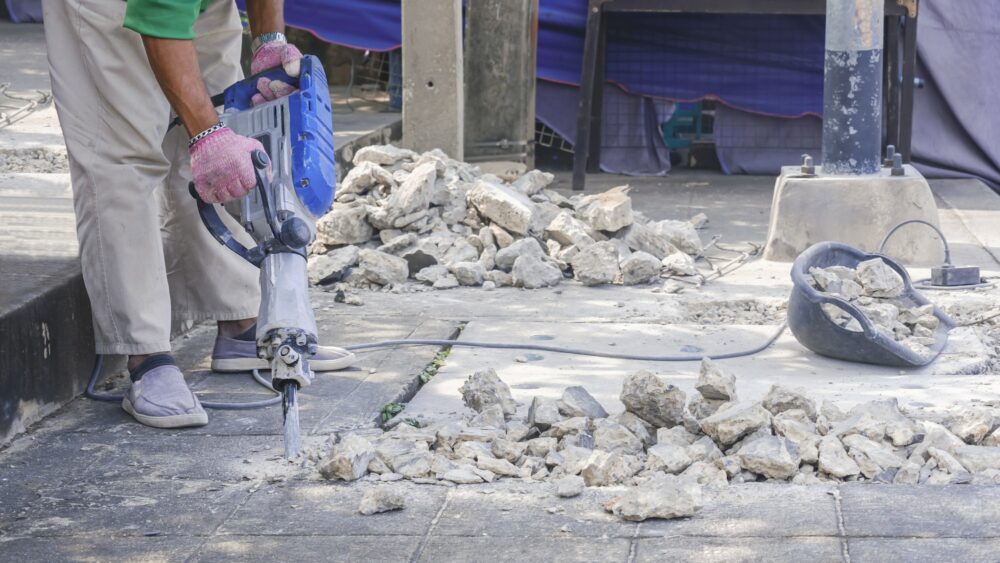A well-designed foundation drainage system is essential to protect your home from water damage. In this comprehensive guide, we will cover the different types of foundation drainage, their components, and how to choose the best solution for your needs. Let’s dive in!
Exploring Types of Foundation Drainage Systems
There are several types of foundation drainage systems to choose from, and understanding the differences is crucial in selecting the best option for your home. The most common types include:
Exterior Foundation Drainage
An exterior drainage system is installed around the foundation perimeter to collect water and direct it away from the structure. This system typically involves a perforated pipe, drainage board, and gravel.
Interior Foundation Drainage
An interior drainage system is installed beneath the basement floor and collects water that seeps through the foundation walls. The water is then directed to a sump pump, which discharges the water away from the home.
French Drain
A French drain is a trench filled with gravel and a perforated pipe that directs water away from the foundation. This type of drain can be installed around the foundation perimeter or in specific problem areas to address drainage issues.
Components of a Foundation Drainage System
To create an effective foundation drainage system, you need to understand its main components:
Drain Pipe
A drain pipe is the core component of a foundation drainage system, guiding water away from the foundation. The best option is a perforated pipe, which allows water to enter from all sides and promotes efficient drainage.
Gravel
Gravel is used for surrounding the drain pipe. Providing a porous medium for water to flow through while preventing soil and debris from clogging the pipe.
Drainage Board
A drainage board is a rigid material placed against the foundation wall to direct water toward the drain system. This component is crucial in protecting the foundation from water damage.
Footing Drain
A footing drain is a perforated pipe installed around the foundation, just below the bottom of the footing, to collect water and direct it away from the structure.
Choosing the Best Foundation Drainage Solution

To determine the best foundation drainage system for your home, consider the following factors:
- Type of Soil: Soil type can significantly impact drainage efficiency. Clay soils retain more water and may require a more robust drainage system than sandy or loamy soils.
- Drainage Problems: Assess the severity of your drainage issues and the potential for water damage. This will help you determine whether a simple French drain is sufficient or if a more comprehensive system is needed.
- Basement Walls: The condition of your basement walls can influence your choice of drainage system. If your walls are prone to cracks or leaks, an interior drainage system may be more effective in mitigating damage.
- Foundation Repair: If your foundation requires repair, addressing drainage problems is essential to prevent further damage and costly repairs.
Installing a Foundation Drainage System

Proper installation is critical to ensure your foundation drainage system works effectively. Key steps in the process include:
- Excavate a trench around the foundation perimeter, ensuring it slopes away from the structure.
- Install the perforated pipe at the base of the trench, with the holes facing downward.
- Cover the pipe with gravel, filling the trench to within a few inches of the surface.
- Lay a layer of landscape fabric over the gravel to prevent soil infiltration.
- Backfill the trench with soil, sloping the ground away from the foundation for optimal water drainage.
By understanding the various types of foundation drainage systems, their components, and the factors to consider when choosing the best solution, you can effectively protect your home from water damage. A well-designed and properly installed foundation drainage system will not only extend the life of your foundation but also safeguard your home’s structural integrity.
Maintaining Your Foundation Drainage System

To ensure the long-term effectiveness of your foundation drainage system, regular maintenance is crucial. Here are some key tips to keep your system functioning optimally:
- Inspect the drainage system regularly, particularly after heavy rains or during wet seasons, to ensure it’s functioning properly and not clogged by debris.
- Keep gutters and downspouts clean, directing water at least 6 feet away from the foundation. This helps prevent excess water from accumulating near the foundation and overwhelming your drainage system.
- Remove tree roots that can cause damage to your drain pipes or obstruct the flow of water.
- Check for signs of foundation damage, such as cracks or leaks, and address any issues promptly to maintain the effectiveness of your drainage system.
- Monitor the slope of the ground around your home to ensure water flows away from the foundation. Adjust the grading if necessary.
By following these maintenance tips, you can preserve the integrity of your foundation drainage system and protect your home from potential water damage.
Final Thoughts on Foundation Drainage Systems
A well-designed and properly maintained foundation drainage system is essential for protecting your home from water damage and preserving its structural integrity. By understanding the different types of systems, their components, and the factors to consider when choosing the best solution, you can make an informed decision and ensure the longevity of your home. Remember, regular maintenance is key to keeping your foundation drainage system working effectively and safeguarding your home’s foundation for years to come.












